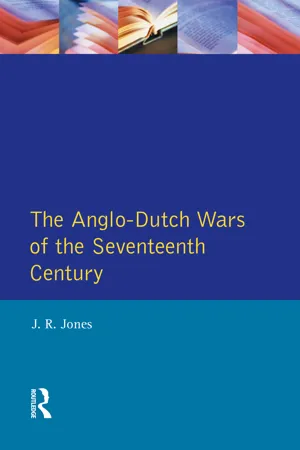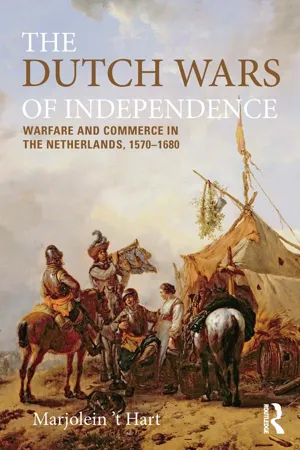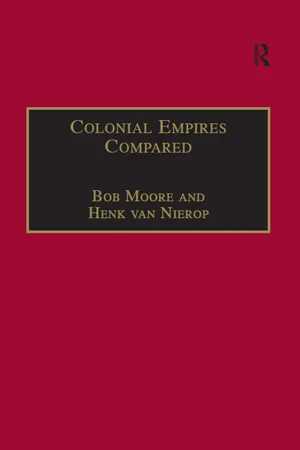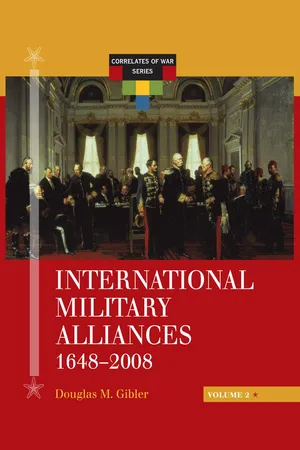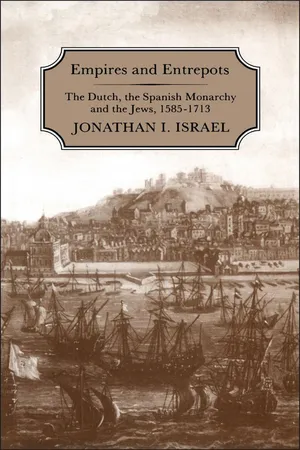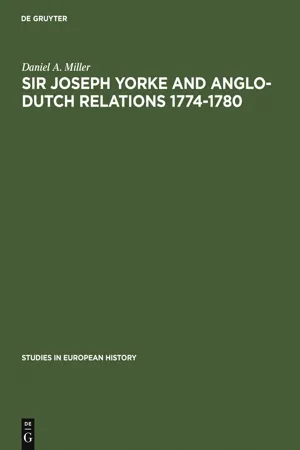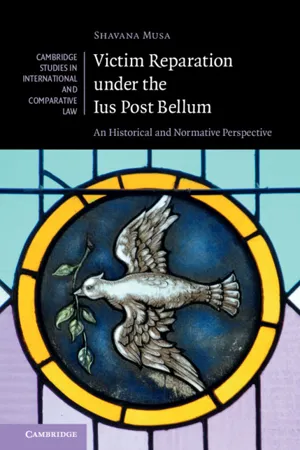History
Anglo Dutch Wars
The Anglo-Dutch Wars were a series of conflicts between England and the Dutch Republic during the 17th century. These wars were primarily fought over trade, colonial expansion, and naval dominance. The outcomes of the wars had significant impacts on the balance of power in Europe and the development of global trade networks.
Written by Perlego with AI-assistance
Related key terms
1 of 5
10 Key excerpts on "Anglo Dutch Wars"
- eBook - ePub
- J.R. Jones(Author)
- 2013(Publication Date)
- Routledge(Publisher)
The Context of the Anglo-Dutch Wars
Passage contains an image
1 Introduction
DOI: 10.4324/9781315845975-1It cannot be said that the three Anglo-Dutch Wars of the seventeenth century have left any real impression on the national consciousness of Britain, and they have attracted comparatively little historical attention outside the Netherlands. For later generations of strategic analysts, with the very important exception of Mahan, they appeared to contain little that was interesting or relevant. Moreover, although Mahan made much use of developments and incidents during the Anglo-Dutch Wars to substantiate or illustrate his principles and conclusions, it is remarkable that the admirals, naval writers, politicians and, above all, the ruler of Wilhelmine Germany resolutely failed to see the close resemblances between the position of the seventeenth-century Dutch Republic and their own, something that should have stood out from Mahan's discussion. In particular they ignored the basic fact that the geographic disadvantages of Imperial Germany were considerably greater than those of the Dutch, that they lacked 'ready access' to the oceans with the British Isles standing across the exits from the North Sea like an eagle with its wings outstretched — as a Dutch skipper described the position before the first Anglo-Dutch War even began. Nor did Tirpitz (or his critics) see that in 1673 De Ruyter achieved as much as any fleet in being of inferior strength could ever hope to achieve, a successful defensive campaign. Of course this failure was politically motivated; a study of the Rump's reaction to the Dutch decision to set out a massively expanded fleet in 1652 would have warned the Kaiser and Tirpitz that the enlarged High Seas Fleet would be seen in Whitehall as a provocative challenge that had to be met.11 The place of publication is London unless otherwise stated. H.H. Herwig, Luxury Fleet (1980) especially chs iii—v; Herwig, 'The Failure of German Sea Power, 1914—1945: Mahan, Tirpitz and Raeder Reconsidered', International History Review - eBook - ePub
The Dutch Wars of Independence
Warfare and Commerce in the Netherlands 1570-1680
- Marjolein 't Hart(Author)
- 2014(Publication Date)
- Routledge(Publisher)
46The Dutch also intervened in the Second Northern War (1655–60), sending a fleet to the Baltic to contain the spread of Swedish power and ensure an open Sound, and stationed troops in the garrison of Copenhagen and also at Danzig to protect the position of Dutch merchants there. Furthermore, the States’ troops were maintained along the eastern border in German territories, in the garrisons of Emden, Leerort, Dijlerschans, Emmerik, Rees, Wesel, Büderich, Rheinberg, Orsoy and Meurs. This nearby Dutch presence was much to the chagrin of the ambitious and powerful Prince-Bishop of Münster, Christoph Bernard von Galen. His attempts to subdue the autonomy of his own town of Münster failed after the urban authorities called in the help of the Dutch military.47Despite all these military commitments, the number of Dutch troops was further reduced, even though von Galen remained a threat on the eastern border. He did manage in the end to establish an absolutist rule in the town of Münster, and then he invaded East Frisia in 1664, where he captured the Dijlerschans fortress. The Dutch mobilized an army and troops under the leadership of William Frederick restored the Republic’s presence in the fortress.News about England’s colonial gains and ambitions contributed to the outbreak of the Second Anglo-Dutch War in 1665. The sea battle at Lowestoft constituted a victory for the English, not least because of the failing leadership of Dutch Admiral Van Wassenaer-Obdam. On top of that, 20,000 Münster troops, partly financed by England, invaded the eastern provinces of the Republic and captured a series of towns, including Doetinchem, Oldenzaal and Almelo. The Dutch army under Johan Maurice of Nassau-Siegen remained at the Yssel frontier to prevent an attack on the Yssel towns, while the Münster army moved north in a strategy to establish a direct link with the English at the coast. French troops came north to support the Dutch position on the Yssel, but their counter-attack almost came to nothing as funds to feed the soldiers were lacking. Diplomatic intervention on behalf of the Dutch by the Great Elector of Brandenburg, Frederick William (1640–88), resulted in the retreat of von Galen, who was in dire financial difficulties when funds promised by the English dried up. The Prince-Bishop thus accepted the peace conditions rapidly. At sea the Dutch Admiral Michiel de Ruyter successfully defeated the English in a four-day battle, but the English then gained the upper hand in a two-day battle. The war ended when the Dutch, in a daring raid, sailed up the Thames to Chatham in 1667 and inflicted serious damage on English ships based there.48 - eBook - ePub
Colonial Empires Compared
Britain and the Netherlands, 1750–1850
- Bob Moore, Henk van Nierop(Authors)
- 2017(Publication Date)
- Routledge(Publisher)
7 IIYorke took up his post in 1751, and the middle decades of the eighteenth century were crucial in the history both of the alliance and of his own mission. It is conventional to point to the extended period of Anglo-Dutch cooperation and partnership which stretched from the 1670s, with the ending of the Third Anglo-Dutch War, to 1780 and even to 1795 when the stadholderate was finally abolished.8 Such an approach is perfectly valid, but it obscures an important reconfiguration of the alliance which took place after the restoration of the stadholderate in 1747 in the person of William IV, a shift linked to a wider change in the Republic’s international position.9 From the age of William III to the advent of William IV to power, the Dutch Republic and the British state had been – or, at least, had seemed – roughly equal in power and potential. Their cooperation had not been altogether easy: there was too much commercial and maritime rivalry for that. Yet shared opposition to France had led the two countries to fight side-by-side in the long wars of 1689–1713/14 against France, to shape the peace settlement which concluded them and the ‘Barrier’ system which this established, and to remain allies during the generation of peace which followed. These links were buttressed by a series of dynastic marriages between the ruling families of each country. The Republic’s reduced political role, after it had spent its power in the long struggle against Louis XIV, had not initially influenced its relations with Britain.10 With hindsight it is evident that the War of the Spanish Succession was the last occasion on which the Dutch played the role of a leading state. Overextension, and the immense financial problems which resulted, produced a notable contraction of the army in the aftermath of the Peace of Utrecht. The Republic, however, was central to the alliance system which re-emerged after the Spanish Succession conflict, particularly in the Barrier Treaty of 1715 and the Quadruple Alliance of 1716, and this gave it the appearance of a leading state for a generation to come.11 - Helmer J. Helmers, Geert H. Janssen(Authors)
- 2018(Publication Date)
- Cambridge University Press(Publisher)
Often described in more traditional writing as clashes between a ‘pro-war’ party around the House of Orange and a regent ‘peace party’, this has created the illusion that episodic disputes over war priorities reflected deep-seated and permanent opposition within the Dutch state and ruling stratum against war per se. This contention is belied by the fact that during the seventeenth century the Dutch state in practice operated as a permanent war state. Figure 4.1 presents a timeline which includes armed conflicts between the Dutch and one or more major European powers on the continent or in European waters. It shows that, for the entire seventeenth century, three years out of four were years of war in Europe. This still leaves out the many full-scale wars fought by the Dutch East and West India Companies to carve out their respective empires against European competitors, Asian, American, and African 1568 1572 1576 1580 1584 1588 1592 1596 1600 1604 1608 1612 1616 1620 1624 1628 1632 1636 1640 1644 1648 1652 1656 1660 1664 1668 1672 1676 1680 1684 1688 1692 1696 Spain England France Other Figure 4.1 Timeline of armed conflicts in Europe involving the Dutch Republic 74 Pepijn Brandon . rulers, and indigenous populations. Regardless of whether the Dutch Republic was an enthusiastic or a reluctant imperialist – and the first half of the seventeenth century, especially, provides ample support for the former – the result was a global empire that at the time of its peak geographical reach stretched from the collection of North American settlements called New Netherland to a large part of north-east Brazil; via fortresses along the West African coast from the island of Gorée in Senegambia to the Cape of Good Hope settlement; to the extensive and growing VOC empire in Asia. The proliferation of Dutch armed forces can be measured by, among other things, the number of military out- posts built in Asia, Africa, and the Americas.- eBook - PDF
Command at Sea
Naval Command and Control since the Sixteenth Century
- Michael A. Palmer, Michael A. PALMER(Authors)
- 2009(Publication Date)
- Harvard University Press(Publisher)
chapter two The Anglo-Dutch Wars O n 18 M ay 1652 a Dutch fleet of about forty sail, commanded by Lieu-tenant-Admiral Maarten Harpertszoon Tromp, appeared off Goodwin Sands, along the southeastern coast of England. An English squadron of eight ships, commanded by Major Nehemiah Bourne, lay at anchor in the nearby Downs, off Deal. Bourne watched as Tromp detached two small vessels that quickly moved toward the anchorage and hailed the English. The Dutch explained that they sought no trouble, only relief from rough Channel weather. Despite such assurances, Bourne took no chances. He ordered his ships cleared for action and sent a fast boat to Rye Bay, where General-at-Sea Robert Blake commanded the main English squadron of fourteen ships. 1 Anglo-Dutch relations had been steadily deteriorating for years. While the English had supported the Netherlanders during much of their “Eighty Year War” for independence against the Spanish, the Hollanders had become England’s chief commercial and naval competitors, “indis-putably the greatest trading nation in the world, with commercial out-posts and fortified ‘factories’ scattered from Archangel to Recife and from New Amsterdam to Nagasaki.” In the English Channel and the North Sea, the Dutch navy rivaled that of England. In the Baltic, the Dutch had displaced the English commercially, gaining control over the lucrative carrying trade as well as strategically important timber supplies.England’s Muscovy Company had been thrown out of Russia and suffered heavy financial losses, in part because of the competition and machinations of the Dutch. Personnel of the Dutch East India Company (the VOC) quashed English attempts to develop trade in the East Indies in a series of incidents that culminated in the infamous Amboyna massacre of 1623, in which fifteen Englishmen of the East India Company were tortured and executed for allegedly conspiring to seize the Dutch fort at Amboyna. - eBook - PDF
- Douglas M. Gibler(Author)
- 2008(Publication Date)
- CQ Press(Publisher)
The Dutch were concerned over growing commercial tensions and wanted to diplomatically isolate the English from the Continent should another war erupt. This alliance achieved both goals. Following various incidents of privateering and low-level hostilities between the two naval powers, the Second Anglo-Dutch War broke into open fighting by March of 1665. The outbreak of the war and the death of Philip IV of Spain allowed France’s Louis XIV to move on the Hapsburg possessions in the Netherlands without Dutch interference. The French guarantee against Swedish involvement allowed the Danes to back the Dutch, and the declaration of Swedish neutrality assured English isolation in the war. Description of Terms If one country was attacked, the other alliance member had four months before joining the conflict, during which time the aiding country committed to do everything possible to end the conflict diplomatically. Once both alliance members entered a conflict, neither country could abandon the war without the consent of the other. The attacked country would be allowed to recruit troops from the other member state. The alliance was not meant to trigger any conflict nor break any previous entente with other countries. If there were a rupture between the two countries, the sub-jects of both kings living or trading in the other state would have six months to sell their commodities and move. Free trade between the countries was established under the treaty. War-ships were allowed free travel within the rivers and ports of both countries, but their passage was to be as short as possible. If ships of the two countries were to meet at sea, they were not to approach closer than within a cannon’s reach and would send only a small embarkation. This treaty stipulated that the alliance would last for twenty-five years. 7 - eBook - PDF
Empires and Entrepots
Dutch, the Spanish Monarchy and the Jews, 1585-1713
- Jonathan Israel(Author)
- 1990(Publication Date)
- Hambledon Continuum(Publisher)
l A CONFLICT OF EMPIRES: SPAIN AND THE NETHERLANDS, 1618-1648 SINCE THEY DERIVE ALL THEIR GAINS FROM TRADE WITH SPAIN AND Italy, claimed the marqués de Aytona, referring to the Dutch in the Spanish Council of State in July 1622, should they lose this commerce, they shall be less powerful enemies and we can expect a good settlement favourable to Spain. 1 This assertion of one of Philip IV's senior ministers well illustrates the thinking that lay behind Spanish policy at the outset of the Spanish-Dutch struggle of 1621-48. Essentially, Philip's ministers aimed to weaken the United Provinces sufficiently to win a buen concierto, an agreement settling the various issues in Spanish-Dutch relations, mostly relating to commercial and colonial matters, to the advantage of the Catholic Monarchy. The principal means by which it was proposed to achieve this, and that which was primarily used, was the application of economic pressure on a scale that had never before been attempted and with which there was to be nothing comparable until Napoleon's Continental System more than a century and a half later. In the conflict of 1621-48 the land war was mostly rather static and often perfunctory. The famed army of Flanders played a largely secondary and defensive role. As regards Spain at least, it was in the sphere of economic warfare that the major effort was made, producing a considerable impact not only on the Netherlands and Spain itself but on much of the rest of Europe. By any measure, the second Spanish-Dutch war was a key formative episode in early modern history and yet curiously, until very recently, it has attracted virtually no scholarly interest. Partly perhaps this may be due to a lingering tendency to regard the conflict as a con-tinuation of the Dutch struggle for independence which, to all intents and purposes, was won by 1609 when the first Spanish-Dutch war ended. - Daniel A. Miller(Author)
- 2010(Publication Date)
- De Gruyter Mouton(Publisher)
π THE INFLUENCE OF THE AMERICAN REVOLUTION UPON ANGLO-DUTCH RELATIONS, 1774-1777 The years 1774-1777 are of great significance in Anglo-Dutch relations. The naval blockade imposed upon its rebellious colonists by the British government interfered with Dutch trade to America and thereby revived the dormant Anglo-Dutch controversy over the rights of neutrals. The Treaty of 1674 was again brought into the limelight, and the principle that free ships make free goods became the watchword of the Dutch merchant class. In Holland, William V and the pro-English faction be-came increasingly reluctant to advocate measures which offended the powerful Amsterdam merchants. The days of close political concert between Stadtholders' Court and the British government drew to an end. The Amsterdam faction again opposed Great Britain within the coun-try, and the question of trade with America became the issue on which it hoped to defeat the Stadtholder and his faction. Amsterdam became a haven in Europe for American agents, who openly sought to borrow funds from the Dutch and secretly carried on intrigues with French offi-cials. These events increased the British fear of French intervention in the American war. All this, coming in the first three years of the American war, gave new significance to Yorke's role as British minister to the Hague. His dis-patches of this period are probably the best historical source available for the events connected with the illicit Dutch trade to the American colonies. His reports to his government were so informative that a fairly accurate picture of Anglo-Dutch relations can be drawn from them alone. Yet no major historical work has sought to follow Yorke's career in the stormy period of Anglo-Dutch relations between 1774 and 1777. Before the American war began, Yorke had ferreted out evidence that military supplies were going from the United Provinces to America. In August, 1775, he had suggested that the British government take action- eBook - PDF
A Global History of War
From Assyria to the Twenty-First Century
- Gérard Chaliand(Author)
- 2014(Publication Date)
- University of California Press(Publisher)
Well-coordinated cavalry could deliver a virtually continuous stream of fire. The French Huguenots sent reinforcements to the Dutch Protestants. François de La Noue would distinguish himself there as a general. The Dutch War of Independence (1568–1648) was not only religious; the Ref-ormation greatly increased the political and economic role of the mer-chant classes, who would come to play an increasingly important role in seventeenth-century Holland, despite the continued influence of the landed gentry. There were few decisive battles in this war. Dutch dikes, swamps, canals, and estuaries were less conducive to decisive victories than open fields of battle. Military operations were delayed by long sieges and prolonged naval battles. Spain’s delays in paying its troops led to a mutiny and the sacking of Antwerp, the largest Netherlandish city of the time, in 1576, a calamity known as the Spanish Fury. Hostilities of another kind were also faced by Spain, whose galleons were often attacked by pirates supported by the English crown. In 1587, Philip II readied a fleet at Cadiz to invade England. The English priva-teer Sir Francis Drake managed to destroy a portion of the Great Armada, delaying its sailing until the following year. Consisting of 130 ships, including eight galleys, with 7,000 sailors and 17,000 Spanish soldiers, the Armada was an army transported by sea. It was opposed by experienced English captains such as Drake, John Hawkins, and Martin Frobisher, who commanded over a hundred smaller but more maneu-verable ships. The English were victorious, but their victory did not change the balance of power on the continent, which remained largely in favor of Spain. However, the defeat of the Spanish Armada reduced Spanish pressure on the Netherlands at a time when the House of Orange had an invalu-able leader in Maurice of Nassau. He paid his troops punctually but Overview | 35 demanded strict discipline and rigorous training. - eBook - PDF
Victim Reparation under the Ius Post Bellum
An Historical and Normative Perspective
- Shavana Musa(Author)
- 2019(Publication Date)
- Cambridge University Press(Publisher)
The Raid on the Medway had scarred the English; arguments over colonies continued and English mercantilist legislation enraged the Dutch. But in comparison to the two previous wars, a couple of major bones of contention had been resolved. Pulo Run was in the hands of the Dutch and England possessed New York. 91 This alleviated some of the tension, but certainly not all. Charles II did not stop believing that the Dutch were the enemy. Hostility could be reignited at any moment, as other neighbouring countries also knew. Louis XIV of France still sought the Spanish Netherlands. Aware of subsisting English grievances, he knew the lure of substantial pecuni- ary rewards could induce an Anglo-French alliance against the Dutch, especially given Charles II’s own aspirations for success in foreign policy. 92 He was right. The Secret Treaty of Dover 1670 cemented the dynasty’s duty towards France converting to Catholicism and starting a war against the Dutch Republic. A Third Anglo-Dutch war had begun. England’s decision to ally itself with Louis XIV highlighted the polit- ical disposition of the war. 93 This decision proved very unpopular both in England and in the Dutch Republic. Observers in England reported an anti-Catholic uprising from Protestants. One report stated that ‘[t]he declaration of war against the States General of the United Provinces has 90 Article 6 of the Treaty of Peace between Denmark-Norway and Great Britain, signed at Breda, 21(31) July 1667. 91 C.R. Boxer, ‘Some Second Thoughts on the Third Anglo-Dutch War, 1672–1674’ (1969) 19 Transactions of the Royal Historical Society 67–94, 70–71 (hereafter ‘Boxer, “Some Second Thoughts”’). 92 Maurice Lee Jnr., The Cabal (Illinois 1965) 80–94. 93 J.R. Bruijn, ‘Kaapvaart in de Tweede en Derde Engelse Oorlog’ (1975) 90(3) Low Countries Historical Review 408–429, 408.
Index pages curate the most relevant extracts from our library of academic textbooks. They’ve been created using an in-house natural language model (NLM), each adding context and meaning to key research topics.
